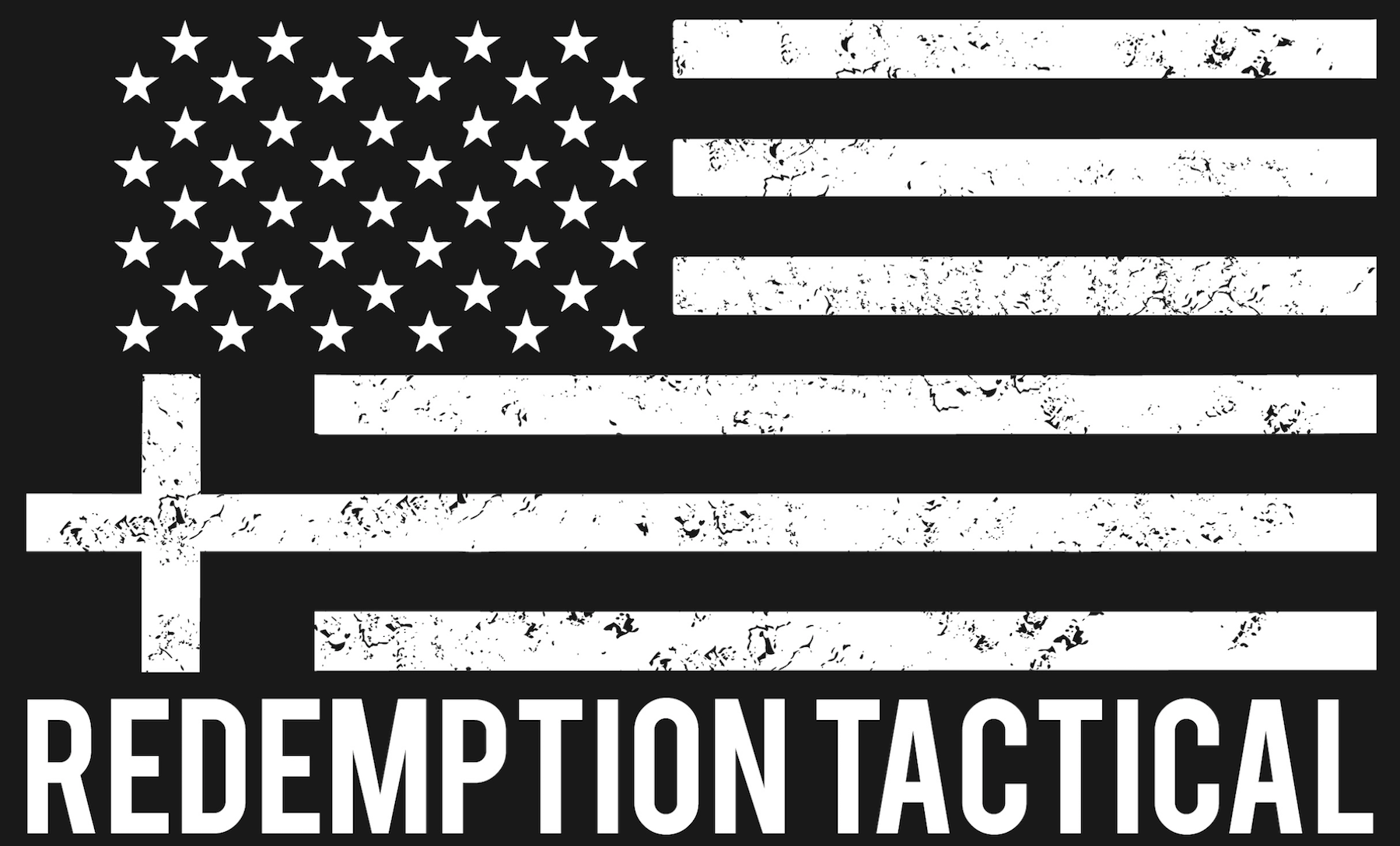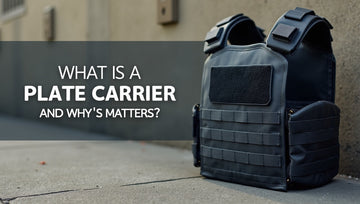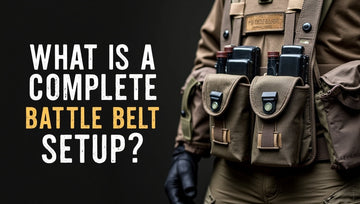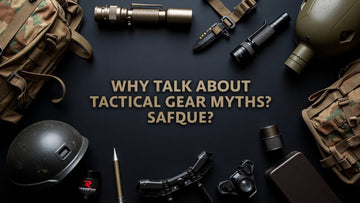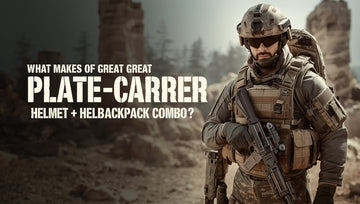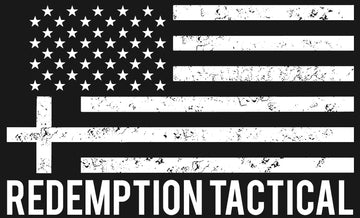When you hear the term plate carrier, it might sound like just another piece of tactical jargon. But the reality is simple: your choice of protective gear can mean the difference between mobility and survival. A plate carrier is more than fabric; it’s a system built to hold ballistic plates that stop rifle rounds. A vest, on the other hand, usually provides either lightweight storage for equipment or soft armor protection against handgun threats.
At Redemption Tactical, we’ve seen firsthand how the right setup saves lives, whether in the field with law enforcement or on active battlefields. That’s why understanding the difference between a plate carrier and a vest is not only practical but essential before you invest in gear.
What Exactly Is a Plate Carrier?
A plate carrier is a load-bearing system built to hold armor plates. These plates, made from steel, ceramic, or polyethylene, provide ballistic protection against rifle rounds. The carrier itself is usually constructed with heavy-duty fabric and reinforced stitching. Most models come with MOLLE webbing, allowing users to attach pouches for magazines, medical kits, or communication tools.
Unlike a simple vest, a plate carrier isn’t designed to be lightweight clothing. Its main purpose is to secure plates close to the body while balancing comfort and mobility. This makes it the go-to choice for military and law enforcement professionals facing rifle threats.
Plate carriers are also highly modular. You can add side plates, hydration packs, or additional gear depending on your mission. While heavier than vests, they offer unmatched ballistic protection in high-risk environments. For those who want real defense against rifle fire, a plate carrier is not optional; it’s the standard.
What Is a Vest?
The word “vest” often confuses because it can mean different things in tactical gear. A tactical vest is primarily used as a load-bearing garment. It doesn’t always include ballistic protection, but provides easy access to gear like magazines, radios, or flashlights. Tactical vests are popular with law enforcement, training units, and even airsoft players because they are lightweight and easy to set up.
A bulletproof vest, on the other hand, usually refers to a soft armor vest. These vests are built with materials like Kevlar or aramid fibers designed to stop handgun rounds. They are lighter and more flexible than plate carriers, but don’t protect against rifle fire.
So, while all plate carriers are technically vests, not all vests are plate carriers. That’s where most of the confusion comes from. Understanding this helps you decide whether you need lightweight mobility or serious ballistic protection.
Plate Carrier vs Vest: Key Differences
When comparing a plate carrier vs a vest, it’s easier to think in terms of three categories: protection, mobility, and customization.
Protection: A plate carrier, when fitted with armor plates, is built to stop rifle rounds. Vests with only soft armor protect against handguns but not higher-caliber threats. Tactical vests without armor offer no ballistic protection at all.
Mobility: A vest is lighter and more comfortable, making it the better choice for long wear or non-combat situations. Plate carriers are heavier because of the plates, but still allow good movement compared to older, bulky armor.
Customization: Plate carriers feature MOLLE webbing, letting you build a modular setup with pouches, hydration carriers, or medical gear. Tactical vests may offer some storage but lack the flexibility of a carrier.
Cost: Vests are generally cheaper. Plate carriers, especially with quality plates, cost more but provide far greater protection.
In short, vests prioritize mobility and cost efficiency, while plate carriers maximize protection and adaptability. The decision depends on your mission, threat level, and budget.
When to Use a Plate Carrier vs a Vest?
Choosing between a plate carrier and a vest depends on your situation. If you’re in law enforcement or military service facing potential rifle fire, a plate carrier with ballistic plates is the clear choice. It offers the protection needed in active combat or tactical raids.
For lower-risk environments, such as training, search operations, or recreational use like airsoft, a tactical vest may be better. It gives you gear storage without the extra weight of armor. Soft armor vests are useful for patrol officers or security staff who need handgun protection but don’t require rifle defense.
Budget also plays a role. A vest is more affordable, while a full plate carrier setup requires investment. Still, the added safety and modularity of a plate carrier make it worth the cost when lives are at stake.
Pros and Cons of Each Option
Plate Carrier – Pros:
-
Stops rifle rounds with ballistic plates
-
Highly modular with MOLLE attachments
-
Durable and battle-tested
Plate Carrier – Cons:
-
Heavier than a vest
-
More expensive
-
Less breathable for long wear
Vest – Pros:
-
Lightweight and comfortable
-
Affordable compared to carriers
-
Good for mobility and training use
Vest – Cons:
-
Limited or no ballistic protection
-
Less modular in most designs
-
Not suited for high-threat environments
In practice, the plate carrier vs vest decision is about balancing protection and mobility. Carriers shine in high-threat scenarios, while vests serve best in lower-risk or recreational roles.
Final Thoughts
Choosing between a plate carrier and a vest ultimately comes down to your needs, environment, and level of threat. Plate carriers provide unmatched protection against rifle fire and allow for modular customization, making them ideal for high-risk operations or tactical missions. Vests, on the other hand, offer lightweight comfort, affordability, and convenience for lower-threat situations, training, or recreational use. Understanding the difference ensures you select gear that balances safety, mobility, and practicality.
For reliable, battle-tested plate carriers and tactical vests, trust Redemption Tactical.
Explore our range today and gear up with confidence for every mission.
Visit Redemption Tactical for premium protective gear built for professionals.
FAQs (Frequently Asked Questions)
Q: Is plate carriers bulletproof on their own?
A: No. Without ballistic plates, a plate carrier is just a fabric shell. Protection depends on the plates you insert.
Q: Can a tactical vest stop bullets?
A: Not unless it’s built with soft armor panels. Most tactical vests are for carrying gear, not stopping rounds.
Q: What’s lighter: a vest or a plate carrier?
A: A vest is always lighter. A plate carrier with armor plates is heavier but offers much higher protection.
Q: Which option is better for law enforcement?
A: It depends on the assignment. Patrol officers often wear soft armor vests, while tactical teams use plate carriers for rifle defense.
Q: Do civilians use plate carriers?
A: Yes, many civilians use plate carriers for personal defense, training, or preparedness. Just check local laws before buying.
Q: Are soft armor vests still useful today?
A: Absolutely. They remain effective against common handgun threats and are lighter for everyday wear.
